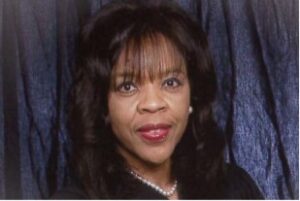By Brenza Irving Jones
District Judge
Louisiana Workforce Commission, Workers’ Compensation
Baton Rouge, LA

My mother, Mary J. Irving, was a basketball coach of 33 years. Her teams won five (5) state championships and many other distinguished victories. She was the first African American female to be inducted into the Mississippi Coaches Hall of Fame. She was the first person to introduce me to the concept of pivoting. On the basketball court, pivoting is the action of stepping with one foot while keeping the other foot as a point of contact with the floor. Pivoting on the basketball court allows one to analyze options for the implementation of the greatest technique that will lead to the scoring of points and an ultimate victory. The pivot requires one to stop, analyze, adjust, and then, act.
During over thirty-two (32) years of service as a Workers’ Compensation District Judge, I have been presented with many occasions demanding a pivot. Adjustments and modifications are inevitable in a constantly changing legal and technological system. In my position, adaptation, while remaining centered with the ultimate goal of resolution, is essential.
When I was a newly appointed judge, I attended the National Judicial College. The information I received was invaluable and implemented. I still recall the ninety-three year old retired judge who advised the class to conference with attorneys on the morning of trial to ask the simple question of whether they had attempted to settle the case. I am often surprised to discover, in many cases, no attempt was made. Further, I am pleasantly surprised when the parties reach a settlement agreement in those cases following my imposition of “mediation” techniques. I used the knowledge gained at the college to “pivot” from judge to mediator, with resulting resolution.
Recent observations gleaned during my tenure on the bench led me to conclude, it is time to pivot again. Thus, in August 2025, I returned to the NAWCJ Judicial College. Following my attendance, I returned to the bench with a greater level of enthusiasm. The opportunity to glean from my colleagues from various parts of the country proved to be an invaluable experience. Panel discussions concerning artificial intelligence gave me a heightened alert about what to expect and what to avoid. Clearly, a pivot from the traditional research methods and writing style is mandated.
The presentations concerning generational shifts and their impact on our decision-making process confirmed a new trend. Discussions regarding technology in the courtroom and the impact of the ever-changing healthcare system were informative. On a personal level, I found confirmation of appropriate pivoting from the bench and endorsement of anticipated strategies projected for continued success.
Whether on the basketball court or in the courtroom, one must know when the occasion requires a pivot. On the basketball court adjustments may become necessary to score and to win. On the bench, we must respond to changing circumstances. We must maintain a just and timely resolution of disputes. We must uphold the greatest options and techniques for the administration of justice in a fair and equitable manner, pivoting, as necessary, within our “courts” of law.